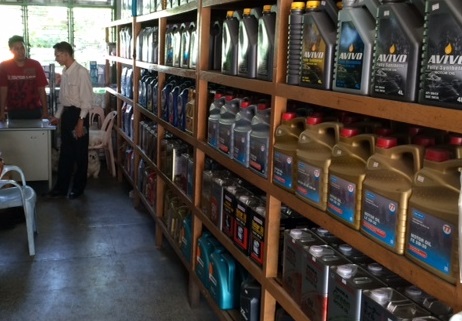As Myanmar transitions to democracy and attempts to open its economy to the outside world, its lubricant market is growing at double-digit rates, an oil industry insider said recently.
The long-isolated Southeast Asian nation is experiencing rapid growth in automobile population and has begun upgrading roads and other infrastructure, Interra Resources Vice President Sugi Handoko told the ICIS Asia Base Oils & Lubricants Conference in Singapore last month.
The volume of the automotive lubricant market from 2009 to 2013 had a compound annual growth rate of about 18 percent, reaching more than 60 million liters in 2013, Handoko said. Interra is an oil exploration and production company based in Singapore.
According to official customs data and a survey by management consulting firm Solidiance, the automotive segment accounted for 65 percent of Myanmars lube consumption in 2013, while the industrial and marine sectors had 30 percent and 5 percent, respectively. Trucks and buses accounted for 45 percent of the automotive segment, followed by motorcycles with 35 percent and passenger cars with the remaining 20 percent.
There are about 50 local brands, with Myanmar companies importing lubricants in bulk from overseas to be repackaged and rebranded under their own name, generally categorized as low-end lubes, Handoko said. The Ministry of Commerce registered around 209 of both international and local house brands, all of them being imported products.

Photo: 77 Lubricants
While the market has been dominated by products from low-end grades for two-wheelers, demand for high-end lubes has been expanding due to the increase in demand for new car models in line with more favorable conditions to import vehicles, he added.
Low-end lubricants have been shrinking from about 90 percent before 2010 to about 60 percent now, with [middle-tier products] holding a significant, 35-percent share of the market. The remaining 5 percent is dominated by high-end lubricants.
This has prompted key international players to pay more attention to the high-end lube segment, and all players are seeking to increase usage of synthetic oil by educating the market and also offering various grades in the high-end lube segment, Handoko continued.
With gross domestic product growing approximately 8 percent annually, rising income and improvements in infrastructure like roads and bridges will become the main factors for growth in the automobile parc. In turn, the increase in vehicle ownership, as well as the number of imported cars, led to growth in the automotive lubricant market and product segmentation in the market, Handoko said. The government has relaxed rules that previously restricted auto imports, he said, and reduced related taxes on vehicles.
Myanmar had an estimated 4.4 million vehicles in May 2014, and the number is rising at a compound annual rate of 17 percent. Eighty-seven percent of the total number are two-wheelers, while cars account for 8 percent and trucks 2 percent.
Most vehicles are at least 5 years old, and 74 percent of roads are unpaved, so demand for spare parts and lubricants is high, he added. The passenger car market is dominated by second-hand Japanese models, mostly Toyotas, and the motorcycle market is dominated by Japanese brands like Honda, Yamaha and Suzuki, along with a number of brands from China.
Consumer knowledge of lubricants is still limited, and most owners or operators make lubricant-purchasing decisions based on price and incentives instead of brand and quality. Consumers are mostly unaware of product [choices] and lubricant use is determined by car workshops and retail stores. It is imperative to engage local importers [in the] automotive lubricants market in Myanmar, Handoko concluded.